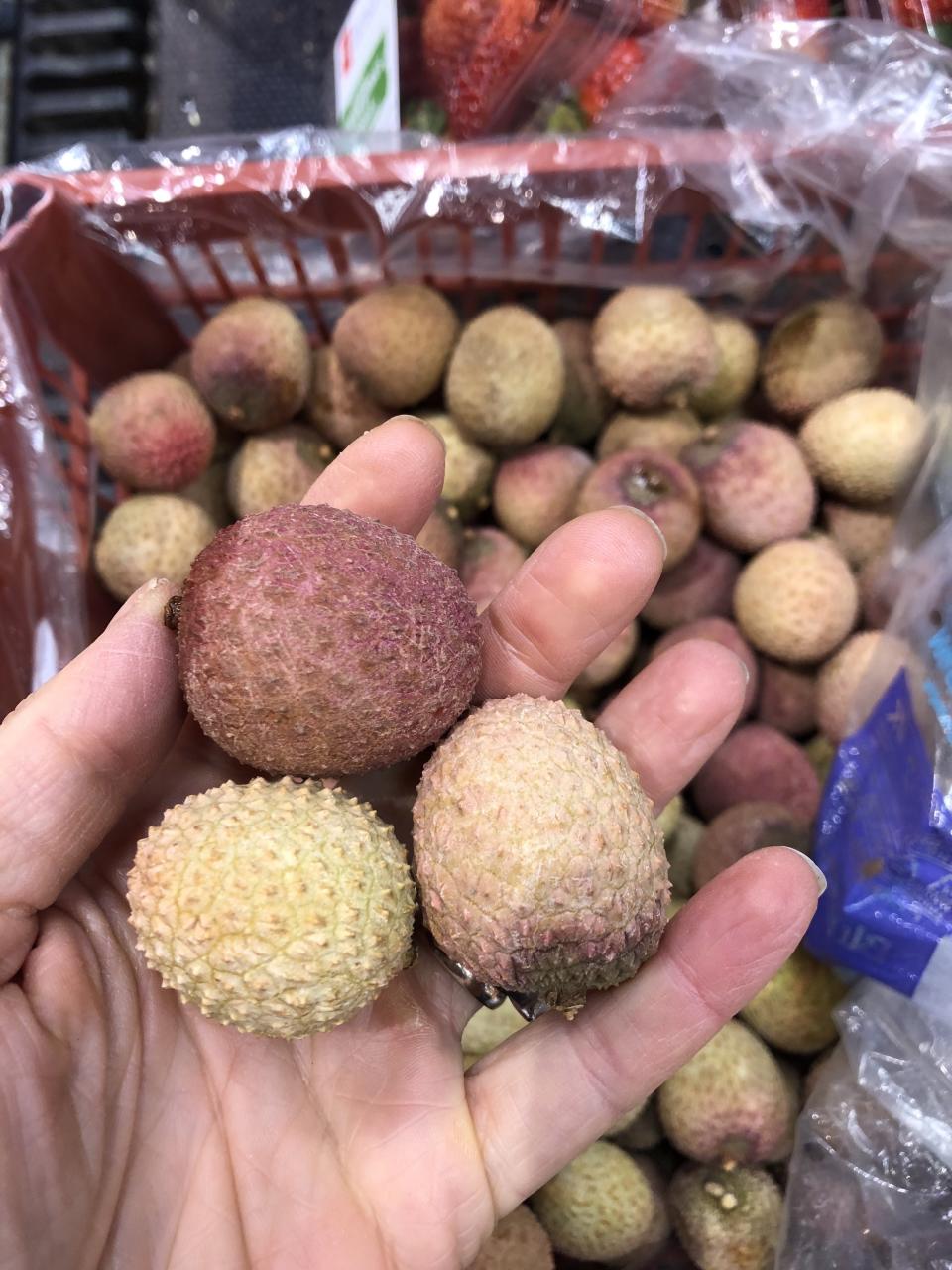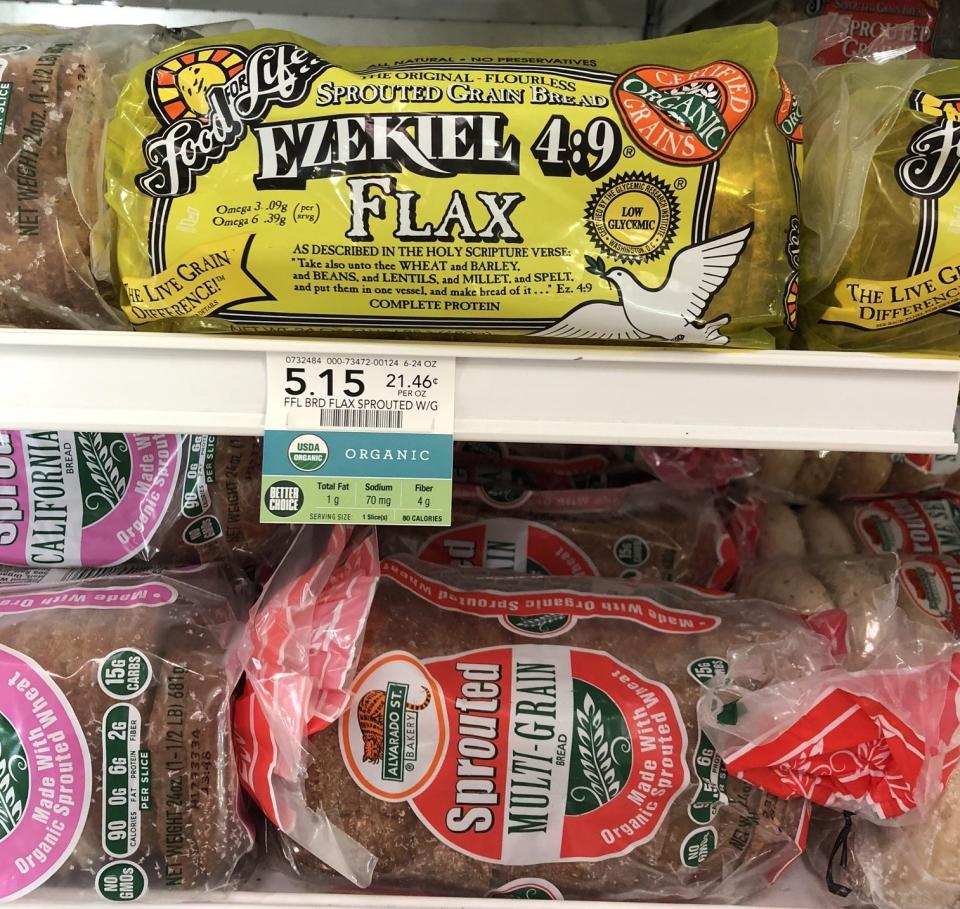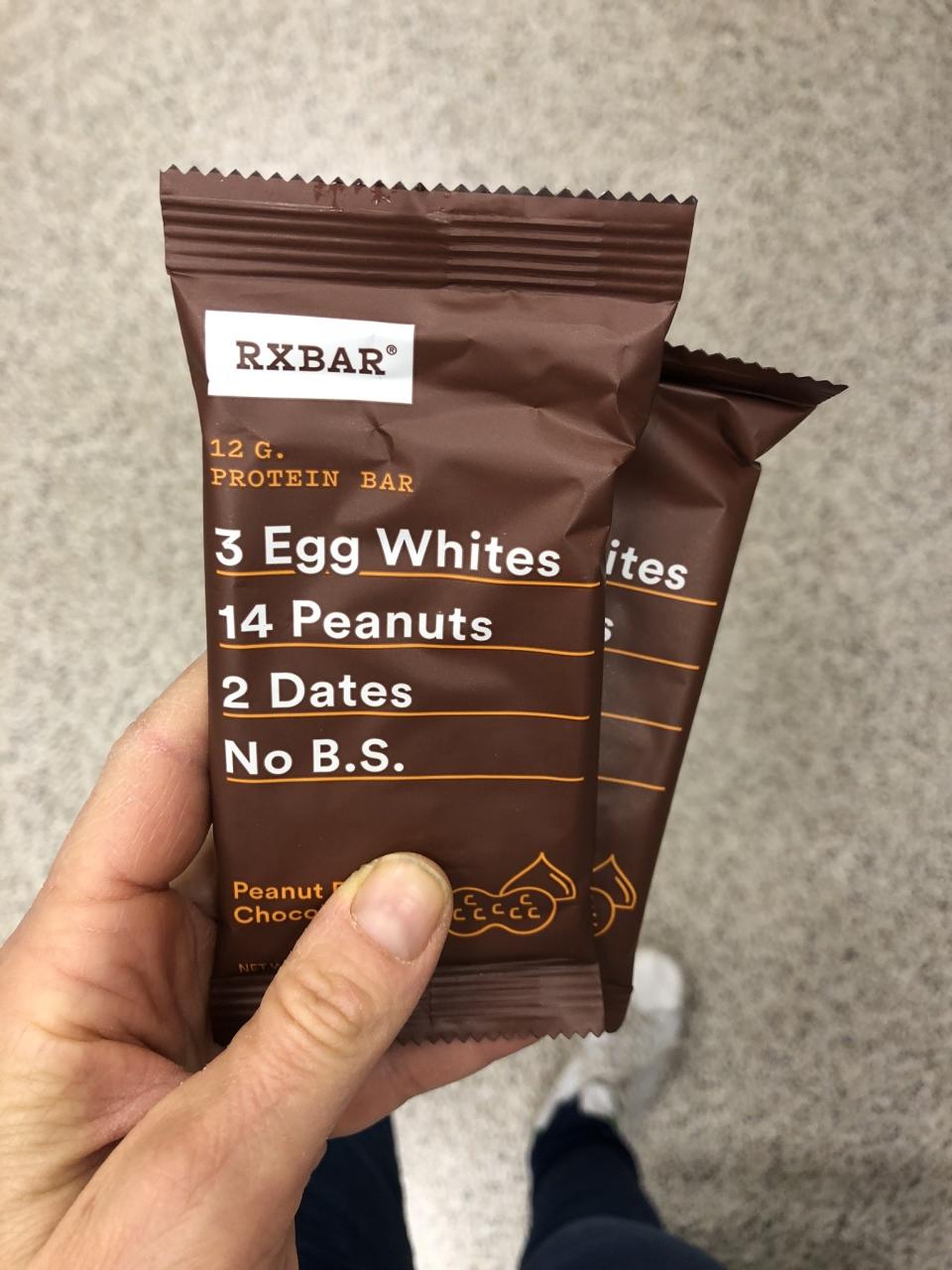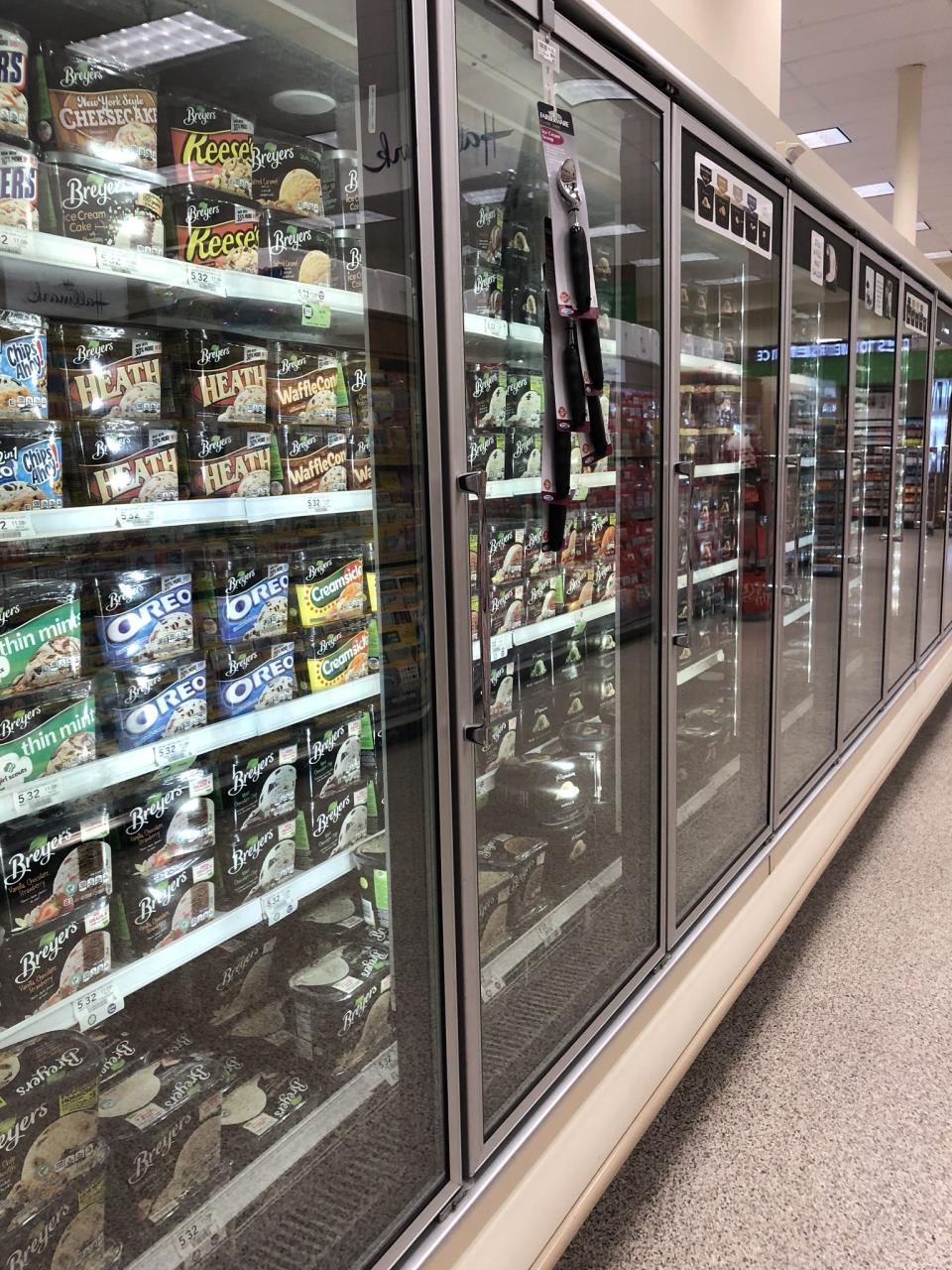I'm an R.D. and I'm Really Great at Grocery Shopping—Steal My Tips
As a registered dietitian, I see grocery shopping as one of the most essential steps you can take towards healthier, more intentional eating. If you don’t restock your kitchen often enough, it’s going to be difficult to make and prepare food for yourself. And if that doesn’t happen, your chances are way higher of resorting to less nutritious and more expensive options like takeout.
Part of working one-on-one with a dietitian often involves going on a grocery store tour with your RD to learn helpful strategies and skills for buying groceries that will be the building blocks of delicious and nutritious snacks and meals. So I’m going to give you your own virtual tour right here and now, so you can see how I build out my pantry and fridge with nourishing (and also a bunch of not-so-nutritious but very satisfying and tasty) foods.
1. Before we start the tour, here's one overall tip I tell all my clients: Try to be open to new things.
A lot of my clients go grocery shopping and grab the same foods week after week. And sure, we all have our favorites and our go-tos. But resist the food tunnel vision: Take the time to look above and below the foods you grab off the shelf, try a new vegetable, see what’s new this week, or on sale at the moment. Variety in your diet is a great way to keep things interesting and keep making food you're excited to eat.
2. Stock up on fresh and frozen fruit.
You already know that fruit and vegetables should be mainstays of your diet, but if you’re cooking for one or two people, it’s hard to keep fresh produce, well, fresh for the week. Frozen vegetables and fruit are just as nutritious as their fresh counterparts, thanks to the fact that most are packed within 24 hours of being picked. They also stay on the plant until they’re at the peak of ripeness, so they tend to be deliciously ripe and sweet.
Maybe you've seen or read something about how you should avoid fruits with higher sugar content. When it comes to fresh fruit, I say don’t worry about “high sugar” versus “low sugar” ones. Just choose whichever fruits you love and will be excited to add to meals or snack on. All of that “don’t eat grapes, they’re a high-sugar fruit” stuff is too nitpicky for me, and I promise: There’s really not enough difference nutritionally between fruit types to spend too much time worrying about eating one kind of fruit versus another.
3. Don't be afraid to try a kind of fruit or vegetable that's totally new to you.
I love trying fruit that’s not native to Canada or the U.S., like mangosteen, dragonfruit, and persimmon. They’re all delicious and a offer nice break from apple and pear fatigue. Fresh lychees are my fave, though; they’re super sweet and easy to peel, no other prep needed! To me they taste like a cross between a melon and a grape, and fresh ones are so much yummier than the syrupy canned ones.

Lychee fruit.jpg
Your veggies should include some dark green options like arugula, spinach, kale, or collards. These are full of vitamin A and folate. Get a good variety of leafy greens and others that you can roast. Yes, you can have potatoes. They’re starchy, yes, but that’s what makes them filling and satisfying, not to mention delicious. And as with fruit, I recommend trying vegetables that are new to you, whether that means discovering that you like something other than broccoli or trying out vegetables that aren't native to your part of the world. Again, a varied diet keeps things interesting.
4. Go for bread that's hearty and filling.
I love bread, so it’s always on my list. I go for Ezekiel sprouted grain bread and Alvarado Street Bakery breads the most, because they’re hearty, higher in protein and fiber, and lower in sugar. They both contain the entire grain, which has been sprouted, so some of its nutrients, such as the B vitamins, are more bio-available. Find these breads in the freezer section. They have no preservatives, so I recommend refrigerating or freezing them so they last longer.

Ezekiel bread.jpeg
I recommend looking for loaves that have between three and four grams of fiber per slice, and as few grams of sugar as possible. Fiber helps satisfy and it’s also good for digestion. Bread with higher fiber and protein will be more filling and satisfying and will make your sandwich or breakfast feel like a full meal. Added sugars aren’t really needed in bread, at least not in the quantities that some bread varieties have. If you’re buying bread at a bakery, choose a whole grain (versus whole wheat, which is more processed and therefore less hearty) variety that’s dense and heavy.
5. Try not to obsess about added sugar.
I should talk about added sugar just to clarify my position on it. I think most of us eat too much added sugar, which admittedly makes things taste great but also doesn’t offer anything in the way of nutrition, especially when it's added to foods like bread or salad dressing. My preference is to mostly try to save my high-sugar snacks for sweets and desserts rather than eating it in processed foods that aren't meant to be sweet but have added sugar in an effort to replace fat that's been removed or to make processed foods more palatable. That being said, I am a big supporter of carbs, especially the whole, nourishing ones like the potatoes I mentioned above. And if I’m being honest, I don’t think any one ingredient is worth worrying or obsessing too much about. My thoughts on sugar are just something I keep in the back of my mind as I shop.
6. When it comes to meat, go for a mix of fresh and frozen.
At the meat and fish section, I generally buy what’s on sale, and what looks good. That usually means some bone-in pork chops (I never buy boneless anything; bone-in meat is cheaper and tastier), flank steak, salmon, a bag of frozen shrimp (I always have one in my freezer for quick meals like these bowls), and a whole chicken for roasting.
7. Pick up tofu, which is a good plant-based protein option.
I’m a huge fan of plant-based proteins, so I always have extra-firm tofu in my fridge for things like stir-fries and to marinate for salads. I also make sure I have cans of chickpeas for quick dishes like my chickpea curry, and lentils for tacos as well as my Mexican lentils with polenta.
8. Dairy-wise, go for the full- (or at least not-too-low-in) fat milk and cheese.
For dairy, I grab butter, milk, feta, parmesan, and string cheese, which I love as snacks. I stay away from dairy that’s less than two percent milk fat. I don't think that super low fat and fat free dairy tastes very good and I also don't think there's a compelling health-related reason to not enjoy full fat or low-fat dairy. I’m always looking for higher-protein snacks, and I’ve rediscovered cottage cheese! My new love is Muuna cottage cheese, because even their fruit-flavored cottage cheese has more protein and less sugar than most flavored yogurt. It also has potassium and comes in little grab and go containers that I throw into my bag before I leave the house. By the way, I work with and receive compensation from Muuna, as well as another brand I mention below, RXBAR. However, my opinions on these and all products are my own. I personally purchase and use all of the products mentioned in this piece.
9. If you only shop the perimeter, you'll miss out on great stuff.
Now would be a great time to bust one of the most persistent and popular nutrition myths out there: that if we want to shop healthy, we should only shop the perimeter of the store. Nothing could be further from the truth; nutritious food is everywhere, not just around the outside.
The middle aisles have great stuff: canned and dried beans, oatmeal, pasta (yup, I love and eat it, both whole wheat and white, and it’s the perfect make-ahead food), canned tuna, nuts and seeds, spices, and seasonings. I make sure to toss some olive oil into my cart; I use extra virgin olive oil for cooking and eating. It has a fairly high smoke point and heart-healthy fats. I love this one from California.
Also in the middle aisle, I always grab a box of RXBAR for myself and my kids. My daughter eats them for breakfast and after her hockey games, and my husband eats them in the car on his way to work. I like that they’re high in protein and have simple, whole ingredients.

Rx bar.jpeg
10. Get plenty of stuff you can heat and eat (or heat and serve).
I cook a lot, but sometimes life gets in the way. Let’s be real: I can’t make every little thing myself. So, my kitchen has frozen chicken nuggets for my kids, because they hate mine no matter how I make them. I buy rotisserie chickens, hummus, frozen fish fillets, and frozen spring rolls.
11. Don't forget dessert and favorite snacks.
I also buy chips, Oreos, or ice cream; you will never not find one of those things in my cart.

Ice cream aisle.jpeg
The way I grocery shop isn't only about making great meals and snacks. I shop this way also because I want my kids to grow up with a normal relationship to food, which for me involves normalizing all foods, not demonizing or putting certain foods on a pedestal. When I was growing up, I was rarely allowed to have store-bought cookies, chips, or even white bread. Once I got older and could buy my own food, I ended up bingeing on it all for years. It was unhealthy and extremely tough to get myself out of that place.
A healthy diet has a wide variety of food and a good attitude towards food and eating. Life is far too short for anything less than that.

